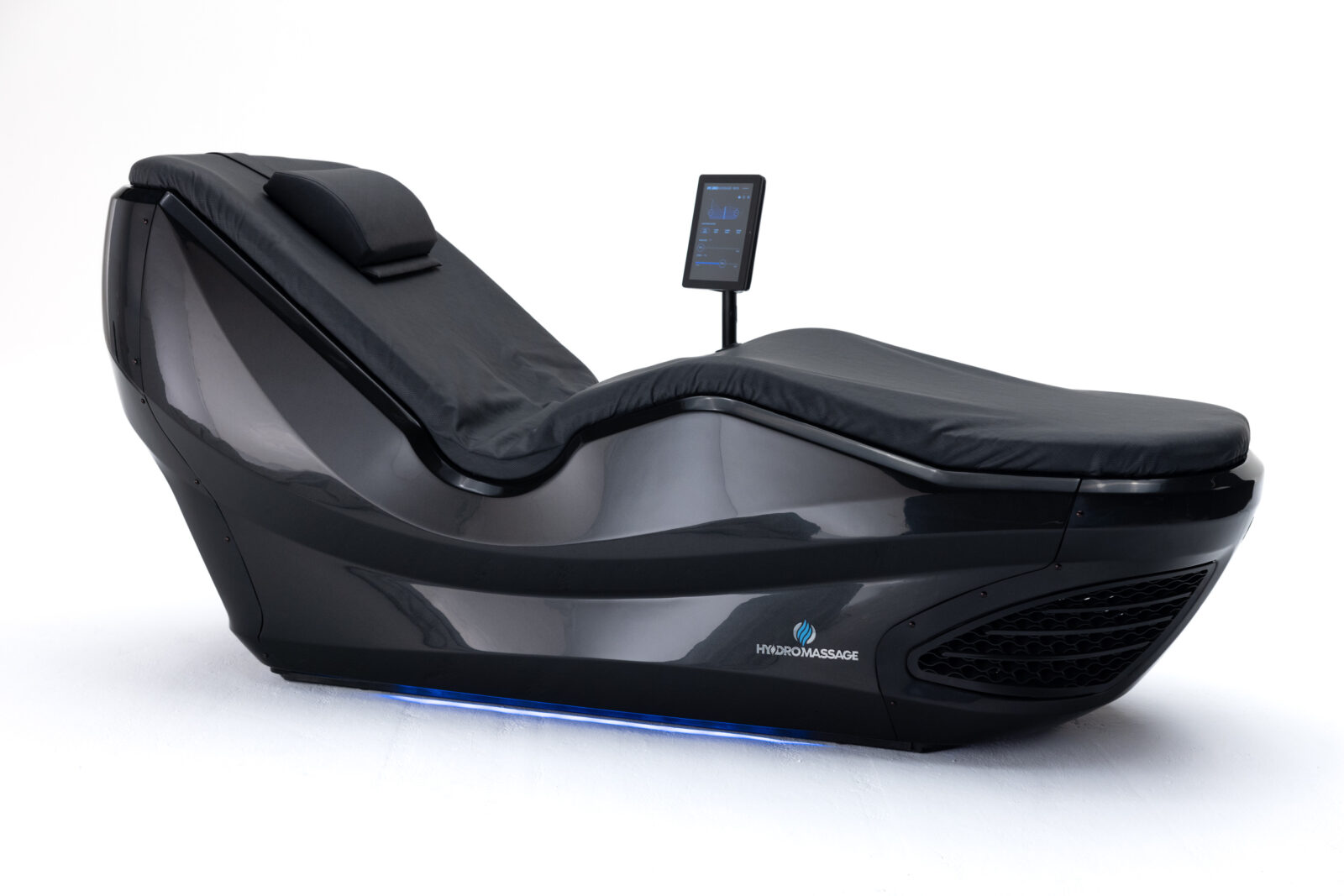Why Building a Wellness Space Completes the Fitness Experience for Members
Partnership
Sponsored By WellnessSpace Brands

WellnessSpace Brands president Kevin Conaway talks design do’s and don’ts, pitfalls and best practices when creating a stellar wellness space
Over the past 4 years, wellness and recovery spaces in gyms have transitioned from being a luxury to a non-negotiable. As consumers increasingly adopt a holistic approach to their well-being emphasizing self-care, health span and longevity, they are seeking out fitness facilities that align with these values.
Modern gym-goers no longer see the gym as simply a place to burn calories or build muscle. They are looking for environments that support a deeper approach to overall wellness. Gyms and studios that fail to offer such spaces risk becoming non-relevant.
The questions then become: where do you start in your build-out? What are the considerations to keep in mind when you’re designing the ultimate space for your members and how can operators and owners create a space that enhances “stickiness” and even brings in new members?
For more than 30 years, WellnessSpace Brands has been addressing these very questions.
“Our longevity in the wellness space gives us a unique perspective,” said Kevin Conaway, the company’s president. We’ve been involved in developing thousands of wellness spaces for multiple industries and can leverage what we’ve learned to help eliminate the pain points and navigate the potential pitfalls for owners and operators designing a new space.”

Navigating Potential Pitfalls
When embarking on the planning process, Conaway says there are two common mistakes that stand in the way of success.
“First, do your homework,” he says. “You should understand what other clubs are doing well. What’s working and what’s not? And even more importantly, you need to understand your member base – what they desire in a wellness space and what type of equipment they will use the most.”
Another mistake? Dipping your toe in.
“You should never start with just one piece of equipment,” he says. “No member wants to be the only person using a single piece of equipment—it’s uncomfortable and counter to the social nature of a gym. You need multiple pieces to make the space feel accepted and even desirable, creating a social experience.”
Beyond these common pitfalls, there are several key considerations to take into account.
Staffed or Unstaffed?
Conaway advises that from a strategic standpoint, the first decision is to determine whether or not the space will be staffed.“Assisted stretching, Cryo chambers, hands-on massage and the like require staff,” he explains. “If that’s part of your model, great, but most gyms don’t have the resources to allocate to this.”
To this end, WellnessSpace products are all designed to accommodate self-guided use.
“We have three product categories – HydroMassage, RelaxSpace and CryoLounge – that are all designed to be completely intuitive and self-guided, offer extreme comfort and require very little staff involvement,” he says.
Location
Conaway says the optimal placement of a wellness space was a learning curve for the fitness industry at first.
“In the beginning, many operators saw wellness as being akin to a personal massage – something to put behind closed doors,” he explained. “But hiding is a big mistake. You want members to know these services exist and to recognize their value. Think of it like a busy restaurant — if it’s crowded and inviting, it becomes enticing.”
The sleek, private design of RelaxSpace Pods provides a full-sensory relaxation experience within a bustling wellness environment. “Products like this are an excellent choice because they offer a personal session while still maintaining a sense of connection with the larger space.”
Product Choice
Product choice is clearly a pivotal aspect, and with so many options, how does one even begin?
Conaway points to four critical factors.
“First, as discussed, gyms find great benefit in choosing self-guided, intuitive products that members can walk up to and use on their own without assistance,” he explains. “This makes the space approachable as well as easy to manage.”
“Second, a high-capacity rate is crucial. Products that can accommodate 30, 40, or more users a day are clearly a better investment than those requiring longer sessions per user.For example, HydroMassager offers full-body relief in 10 to 15-minute sessions, which is key to maximizing your space.”
Next, Conaway highlights the “Ahhhhhh” factor.“If a product appeals to a lot of members and makes them feel great, that’s where you create stickiness,” he says. “Members are driven to return again and again when you offer them something that relieves pain and makes them feel better.
Enter HydroMassage.“The water massage technology delivers a deep, warm massage that contours to the body, making it a popular choice for gyms,” explains Conaway.
Finally, he says, “Give members something they can’t get at home. If you get equipment mix right, they’ll get in the car and drive to your location — even on their off days for recovery.”

Atmosphere
When it comes to atmosphere, Conaway emphasizes that there’s no one-size-fits-all approach, but it’s crucial to ensure the space feels distinct and separate from workout areas, offering a comfortable environment that aligns with your brand’s identity.
“I’ve seen countless strategies for creating the right ambiance,” he says. “Some opt for a calm, dimly lit setting, while others go for a brighter, lighter vibe. What matters most is that the space stands out from the rest of the gym. It should feel special. Prioritize aesthetics—choose products that are not only functional but also visually striking and pleasurable to use. This is what transforms a simple wellness area into a high-end, must-visit amenity.”
To address this, WellnessSpace recently launched the HydroMassage Lounge 440 G3, their most advanced model yet, combining ultimate comfort, durability, and cutting-edge design to make a bold statement in any wellness space.
Conaway says there are two approaches to the financial model. “It’s very simple, ” he says, “You can either charge for it or include it in the membership. The biggest piece of advice here is to make it an easy yes for members. You want more members using the wellness space, so don’t make it a hard decision”
Promotion & Future Proofing
The adage ‘if you build it, they will come’ does not necessarily apply here.“The best way to promote your wellness space is to get members to experience it,” he says. “There’s nothing that replicates a test drive, so invite people in to try the new services.” “Then make sure your marketing reinforces the message that these new services are available for them to enjoy every day.” In support of this, WellnessSpace provides many marketing materials in a Customer Portal, including brochures, posters, banners,videos, staff training, and more.
With so much innovation happening in this space, Conaway advises gyms to leave wiggle room for the future.
“During the design process it’s smart to allocate space for future concepts and equipment,” he says. “Leave some extra room for new concepts so you can grow and evolve as the industry does.
In closing, Conaway emphasizes that while there is no cookie-cutter solution for designing a wellness space, certain elements are essential.
“There isn’t a silver bullet for creating the perfect space,” he says. “But it must be highly visible, comfortable,and inviting.
The equipment needs to make people feel great every time they use it, providing a reason for members to return day after day.
And finally, it’s about more than just adding equipment, it’s about creating an experience that reflects your brand’s commitment to wellness, offers something unique, and drives engagement and retention.
When your wellness space stands out and provides real value, that’s when you’ve truly completed the fitness experience for your customers.”



